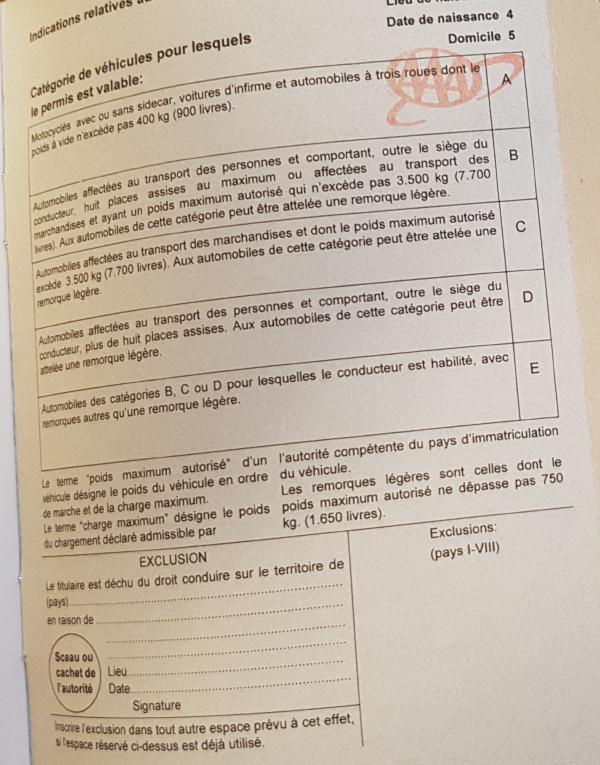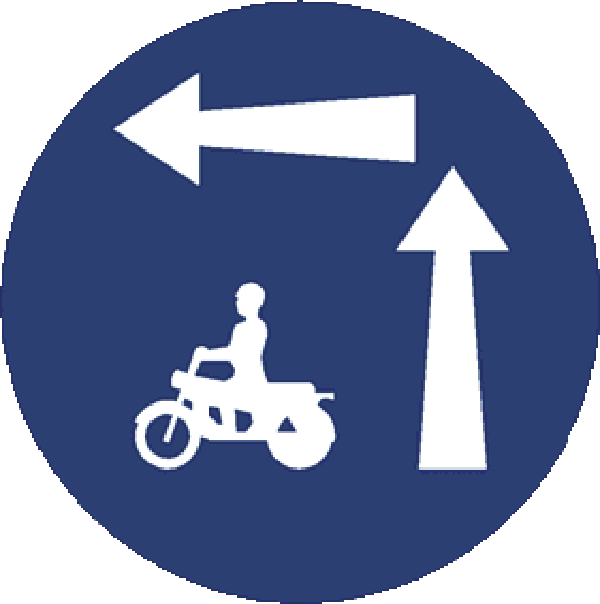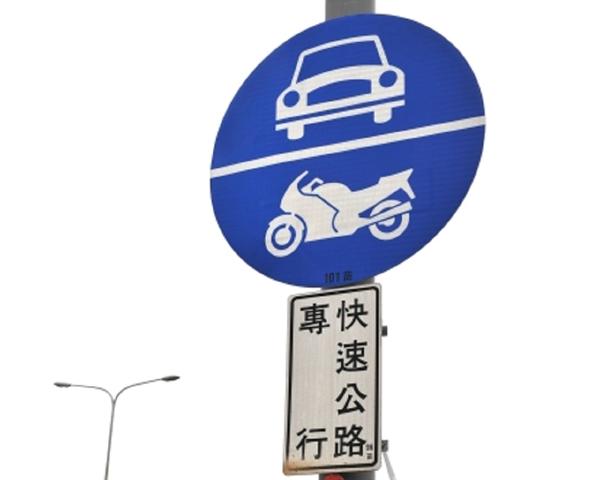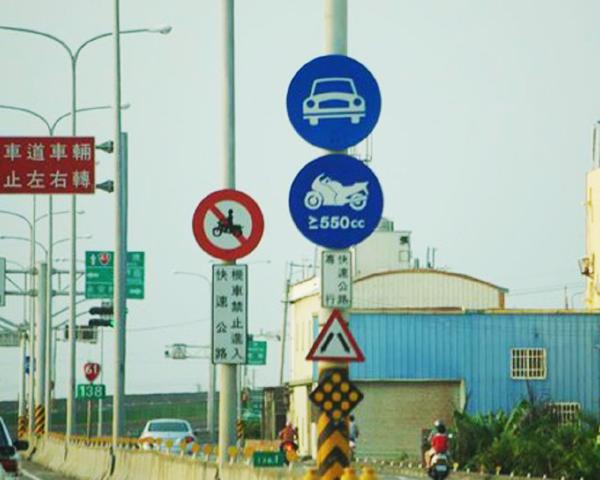I’ve written plenty of times about how I think one of the coolest ways to see a country is on the back of a motorcycle. This is doubly true for Taiwan, where my many videos can speak for themselves on the subject.
There really is some of the best riding in the world here. Clean, well-paved roads with almost no potholes, wide double lanes, endless mountain road choices within 30 minutes of Taipei, and low rental costs combine to make Taiwan as perfect a motorcycle tourist destination as is probably possible.
Renting a motorcycle in Taiwan is simpler than you might expect. With just a little preparation, you could easily add a couple biking days to your next vacation here. If you’re short on time, the two most important sections are, first, regarding the International Driver’s License, and second, going to the rental shop.
Update 2024: A member of our motorcycling group in Taiwan has kicked off a fluent English / Chinese motorcycle, scooter, and car services business, and he offers free consultation for all things motorcycle rental. Feel free to shoot him a message any time! Learn more at englishvehicles.tw;
Basic Info
It’s worth knowing a couple basic things about motorcycling in Taiwan, it’ll make everything a lot easier.
First, motorcycles in Taiwan are separated into four categories based on engine size, and each category has different licensing requirements. Each classification determines the color of the license plate on the bike. From lowest to highest in terms of license requirements (and engine size), the classifications are:
- Green Plate: certain electrics and less than 50cc engines
- White Plate: certain electrics, and 50cc to 250cc engines
- Yellow Plate: 250cc to 500cc engines
- Red Plate: 500cc and larger engines
These classifications apply to two wheeled vehicles only. Cars have their own plate color system.
Below, I’ll get into more specifics about the restrictions and licensing requirements for each type, but to save you time if you’re a motorcyclist: If you have an international driver’s license with a motorcycle certification, you can ride all of the above :)
Green Plate
Electrics and 50cc and under
Green plates are able to be rented on an international driver’s license with no motorcycle certification. They can also be rented on a Taiwan car license with no scooter (white plate) certification. Your options for green plates include sketchy roadside rentals in places like Penghu or Hualien, as well as apps like iRent, Wemo, or GoShare.
Green plates have to ride in the scooter lane and make hook turns, can’t ride on highways or flower roads, can’t ride in the yellow “fast lane,” can park in scooter parking spots, can lane split, and can use the scooter box at a stoplight.
White Plate
50cc to 150cc
White plates can be rented on an international driver’s license with a motorcycle certification, or a Taiwan scooter license (white plate). Sometimes, you can get away with an international driver’s license with no motorcycle certification, but it’s not guaranteed. Also sometimes, you can rent white plates at the same sketchy places in destinations like Penghu or Hualien. There’s some decent bikes in this category by the way, like CBRs and Ninjas. Most scooters you’ll see are white plates.
White plates have to ride in the scooter lane and make hook turns, can’t ride on highways or flower roads, can’t ride in the yellow “fast lane,” can park in scooter parking spots, can lane split, and can use the scooter box at a stoplight.
Yellow Plate
250cc to 500cc
Yellow plates can be rented on an international driver’s license with a motorcycle certification, or a Taiwan Heavy Motorcycle License (yellow and red plate). You probably aren’t going to get away with renting a yellow plate without the right license, no sketchy places or anything like that. Heavy motorcycles are really expensive in Taiwan, nobody’s going to risk a bike like that uninsured. This is an excellent engine size category for Taiwan, especially for single-up riders. It’s more than enough power.
Yellow plates can’t ride in the scooter lane (legally, but often do anyway), can ride on certain highways and one or two flower roads in Taipei, can ride in the yellow “fast lane,” can make left turns (but can’t legally make hook turns), can’t park in scooter parking spots (but often do anyway), can’t legally lane split (but often do), and can’t use the scooter box at a stoplight (but often do).
Red Plate
500cc and up
Red plates can be rented on an international driver’s license with a motorcycle certification, or a Taiwan Heavy Motorcycle License (red plate). You absolutely won’t find anybody renting to you without the proper documentation, the cheapest red plates in rideable condition are $5,000 USD. The category is a little overpowered for Taiwan, unless you’re a two-up rider.
Red plates can’t ride in the scooter lane (legally, but often do anyway), can ride on certain highways and one or two flower roads in Taipei, can ride in the yellow “fast lane,” can make left turns (but can’t legally make hook turns), can’t park in scooter parking spots (but often do anyway), can’t legally lane split (but often do), and can’t use the scooter box at a stoplight (but often do).
Pre-Trip Requirements
Here’s what you’ll need to know about before arriving in Taiwan.
International Driver’s License
Regardless of the engine size of the motorcycle you want to rent, you need an international driver’s license.
I can only speak with experience as an American here. Every country has their own version, and it’s possible some countries’ International Driver’s Licenses aren’t usable in Taiwan.
Americans, you can get your International Driver’s License, or International Driving Permit (IDP) from AAA.
AAA is a private business, and it’s kind of a glimpse behind the curtain here that they get to print a magic piece of paper that having in hand means you get to drive cars and motorcycles in other countries. All authority is bullshit, no gods no kings, etc etc.
It really is just a paper booklet with your picture in it, and it’s lent authority by a bunch of AAA stamps all over it. The stamping is great for you, cause Taiwan LOVES stamps. So, head into your local AAA, bring your driver’s license with M classification on it (you’ll obviously need to already have a motorcycle license…), they can usually take your passport pictures there, and for something like 60 bucks you’ll be out in less than an hour.
IMPORTANT NOTE
The AAA IDP has several pages in various languages with locations to stamp your driving privileges: regular car, motorcycle, truck, etc. The AAA people vary in what they believe regarding stamping these pages: some think only stamping the English page is necessary, some believe only the English page and the page with the language corresponding to the country you’re going to needs stamping. They’re wrong.
Every language page needs to be stamped in the car and motorcycle boxes to be valid.
Countries like Taiwan and Japan don’t just love the stamps, they worship the stamps, and if you don’t have ALL your stamps in ALL the pages, you can’t rent. This happened to me in Japan, and no amount of begging, pleading, showing them the English stamp, or live translating to Japanese using google translate, helped. They. Do. Not. Care.
They want their stamps.

The AAA people will tell you that you’re wrong. They might simply refuse to stamp all the language pages. Be polite, but be firm. Agree with them. Say it’s stupid. It is, after all, kinda stupid. But get your stamps on every page. Don’t leave without those stamps. You won’t be driving without all those stamps.
Gear
The only gear you need by law in Taiwan is a helmet. Some shops will rent one to you for an extra fee, but I don’t really trust those, so you might wanna bring your own. As a onebagger, doing so grates me, as I basically have to have a carry-on if I have my helmet, but it’s worth it to have my SENA and GoPro mount, as well as to not have to share sweat with an unknown number of people. In terms of other gear, I’ve written a bit about how to make this efficient in some of my onebag posts.
Beyond the helmet, know that depending on location, Taiwan in the summer could be hitting 40℃. Or more. I don’t recommend riding in a T-Shirt unless you’d like to cosplay as a block of soft cheddar grinding on a cheese grater, so grab a summer jacket and some summer gloves as well since you’ll need the carry-on anyway.
Experience Level
Experience level is of course subjective, and there’s no clear answer to “how much riding should I do before trying it in another country.” Personally, I learned to ride in Vietnam after riding across its entirety a week after getting my motorcycle license, but I wouldn’t really recommend that.
Taiwan is no Vietnam, but it is a little wilder than some places in the USA. The upside is that generally, the speeds are much lower, and the road conditions are much better. Also, while videos you watch may make the seas of scooters seem intimidating, so long as you just go with the flow, it isn’t too hard to ride in the cities. What may be hard is some of the sharp switchbacks in the mountains, so be sure to practice your uphill turns.
In any case, you know, ride to your comfort and all that, and if you think your experience is good enough to ride in a foreign country, when doing so, try to keep the speed reasonable. After all, basically everyone here is on a scooter, so you can probably figure it out.
Renting in Taiwan
The company we always use is Motor Rental Town. They change their Facebook link sometimes, so here’s a Google Maps link also. They have locations all over Taiwan and can handle whatever rental situation you want: day rental, multi-day, pick up in one city and drop off in another, etc. Their prices are also pretty good. I wish they were hooking me up for pluggin them here, but they’re not.
Motor Rental Town divides their bikes into several categories based on performance. Unfortunately the only way to view the options are by looking at this year’s photo album on Facebook, or their services page. For motorcyclists, I recommend their “Type-C” classification, which in 2022 includes two bikes I can strongly recommend: the Yamaha MT-07 for a more upright ride and the Honda CBR500R for a sportier ride. This classification will run 1500 NTD per day, or about 50 USD a day.
To rent a bike, message Motor Rental Town on Facebook messenger. I agree that this sucks, but this is just how many things are done in Taiwan. At least you don’t need to message them on Line instead. They have a template they’ll send back that’ll ask for things like dates of rental, 3 bike choices, etc. Usually the person on the other end will be helpful in terms of recommending what kind of hourly split you should do, or whether you should adjust your times a bit to save some money.
When it’s time to pick up, you’ll head to whatever location you’re renting from, walk through an active motorcycle shop and car wash to wherever they keep their desk, and show your passport and international driver’s license. They’ll photocopy both, have you fill out some paperwork regarding insurance, photocopy everything again, stamp a bunch of stuff, take a refundable deposit (could be quite high, be ready for this), and give you a receipt that essentially is a sort of guarantee for the both of you that no actual motorcycle “sale” has happened. Try not to lose this, when you give the bike back, it’ll get stamped again with proof that you returned the bike. They take credit cards.
They’ll probably walk you out to the bike, show you how it works (just let them, it’ll take like 2 minutes tops), and advise you to take some pictures and videos of the bike’s state. Make sure to focus on common scratch and drop points so you don’t get blamed for a drop you didn’t do! Though, in my experience over tens of rentals, these guys are very honest.
Once the capitalist rituals are complete, you’re free to go! On a totally empty tank of gas. They’ll probably tell you where the nearest gas station, so hit that, and then ride! (upside: you can and should return the bike on an empty tank)
Riding in Taiwan
Taiwan has some specific weirdness about its road rules.
Hook Turns
Green and White plates can’t make left turns at many lights, especially in the city. I thought it was a bit silly at first but honestly the roads are chaotic enough without scooters randomly darting to the left lane and then across all of oncoming to make a turn.
I’d recommend assuming your upcoming left turn is going to be a hook turn and being in the right lane in preparation. You can always just make a hook turn anyway, even if it wasn’t necessary. But, to tell for certain if an intersection requires a hook turn, look for two things.
One is the blue hook turn sign. It looks like this:

Note that it isn’t always there, and if you don’t see it, that doesn’t mean this isn’t a hook turn intersection.
What will always be at a hook turn intersection is the hook turn box. At an intersection, there are sometimes two scooter boxes: one before the crosswalk, and one after. The one before is where you wait on a red, the one after is for people to your left that are looking to make a left turn, or in other words, perpendicular traffic from the left looking to turn onto your road and join your direction of travel. That’s the box you’ll go into when making a hook turn. So, look towards the perpendicular right-side section of the intersection for the box. See the picture below:

Here’s my riding video from that intersection if you want a closer look.
Incredibly, even roundabouts can have hook turn boxes! Yes, that defeats the point of a roundabout, I’m sure the cop that pulls you over will love to hear this feedback from you.
As for what to do with your indicators when performing a hook turn, nobody seems to know, and I didn’t find any instruction for this when I was preparing for my licensing test in Taiwan. What my friends and I tend to do is flip on the right turn signal when approaching the intersection so people behind us expect our rightwards movement and our slowing down. Then as we get right up on the intersection, we flip the left indicator on, so as to not get cut off from someone to our left going faster than us and wanting to make a wider-radius right turn (which would result in a collision as you continue to go straight). Then we ride over to the box and flip off all our indicators. Obviously, during the whole maneuver, keep your head on a swivel, and take it at a reasonable speed.
Fast Lanes
Sometimes the leftmost, or several leftmost, lanes are “Fast Lanes.” This means only Yellow and Red plate motorcycles, as well as cars, can drive there. They’re identifiable by text written on the road itself that says “fast lane” in Mandarin. You don’t need to know the characters: If you see a long column of yellow text on a lane, that’s probably a fast lane. In general, you should be staying to the right on a white plate anyway.
Arrow Stoplights
Green doesn’t always mean “go.” If a green light is a circle, that means there is no protected left or right turn, and you can do both (carefully). If the green light is a green arrow pointing up, that means there is either a protected left, right, or both. You must wait for a green left or right arrow, or for the green up arrow to turn into a regular green circle, before you can turn. The cops seem to care about this above all else, and I’ve been pulled over twice for this mistake.
Running Reds
Sometimes a yellow light turning red will be blatantly run seconds after it turns red, usually by a truck or bus, but sometimes by things harder than that to see. When you’re stopped at a stoplight and get a green, be smart, give it a couple seconds before you gun it.
Flower Roads and Highways
There’s a couple classifications of road based on size, speed, and frequency of exists. The largest is the “flower road” or “high road” (like, literally, it’s lifted way the fuck up in the air). Only cars and trucks can go on here, and there’s only one or two in all of Taiwan that red or yellow plates can go on.
The symbol for a flower road looks like this:

Also, sometimes this blue sign with a car on it will indicate that only cars can go on this road:

If you see the blue sign with a car and motorcycle on it, that means if you’re on a red or yellow plate, you can go on the road:

Note there’s also the rare freeway that allows cars and red plates only. I’ve seen this twice, but I can’t remember where:

Notice in that last picture, behind the blue sign is a white sign with what looks like a motorcycle on it, crossed out, indicating that scooters aren’t allowed on this road. That little motorcycle dude generally means “scooter” in Taiwan, which includes all White plate bikes.
I think it’s a little confusing that Taiwan uses positive indication rather than negative. By that I mean, rather than saying “Scooters and Yellow plates not allowed,” the signs say “scooters not allowed, red plates allowed, cars allowed.” Another example: above I mentioned arrow stoplights. The stoplights say: “Going straight allowed,” if the green straight arrow is lit, or “going all directions is allowed” if the green circle is lit, but instead I think it’d make more sense to say “turning left not allowed, turning right not allowed, going straight allowed,” with like red arrows or something. Ah well. Hence why you must be extra vigilant when it comes to signage here.
If you see a flower sign with no blue car sign, don’t risk it! The fine is insane (hundreds of USD) and if you get on a flower road, it could be tens of kilometers before you get an exit to get off. According to some local friends, getting on a flower road in the wrong kind of vehicle is enough of an event to make the news here. Careful at all highway entrances! Pull over and double check if necessary, right at the shoulder if you have to.
Taiwan’s Freeway Bureau has a website with some of these signs and their descriptions in English, but it isn’t very good.
Gas Stations
Almost all gas stations have attendants that will pump your gas for you. Just let them, it’ll be easier than trying to figure it out on your own. Don’t tip these people, it’ll cause an enormous amount of confusion.
When you pull up, they’ll probably wave you towards where to go. If not, just start riding straight at an attendant lol. They’ll sort you. Kick off the engine and open your gas tank. Hopefully you know how to count to ten in mandarin, and can tell them the fuel octane you need (no need to say “98 ninety-eight for example, you can just say “9” “8” “nine” “eight”). Then say “ja man” with a Jamaican accent to request the tank be filled all the way. At the end, they’ll probably ask you whether the price on the screen is OK. I’m not sure the purpose, maybe to see if you want to get a round number so you don’t get change? After you pay, wait for your change, and then get out of the way quick or a taxi will honk at you.
Fluidity
If you’re used to driving in the USA, you know that the American obsession with private property extends to the commute, and that passing someone too close, or edging into their lane near them, will result in a furious litany of beeping.
In Taiwan, things are a bit more fluid. It’s not to the level of Vietnam, where lanes kinda sort don’t matter, but be ready for cars to cross halfway into your lane as they avoid some obstacle. This is especially true in the second-to-rightmost lane: cars in the rightmost lane will cross partially into your lane to avoid parked cars, or vehicles coming from perpendicular roads turning onto yours.
On that note, be ready for anything to come flying out of a perpendicular road without a stoplight (so alleys and the like). The strategy here seems to be, when making a right turn onto a major road, simply continue driving and make the turn without looking, and good luck everyone else.
Maybe it goes without saying, but also be ready to share your lane with hundreds of scooters and motorcycles. They’ll pass you, you’ll pass them, all in the same lane, all of the time.
Trash Cycles
There’s these ancient motorcycles and bicycles around that have a big trailer off the back, usually laden with trash bags. The rules of the road don’t apply to them, and this is expected by everyone. They will maintain a constant speed of 12mph in all situations: approaching and then directly through a red light, through a group of pedestrians, in the second to left most lane of a 4 lane major road, etc. Don’t bother beeping, just do what everyone else does and go around them.
Blue Trucks
There are a lot of blue trucks here, the rules of the road do apply to them, but that doesn’t matter because the drivers are all on crack 24/7. Just yield to them at all times, don’t make eye contact, and toss three grains of salt (but not four) over your shoulder after an encounter, and you’ll be fine.